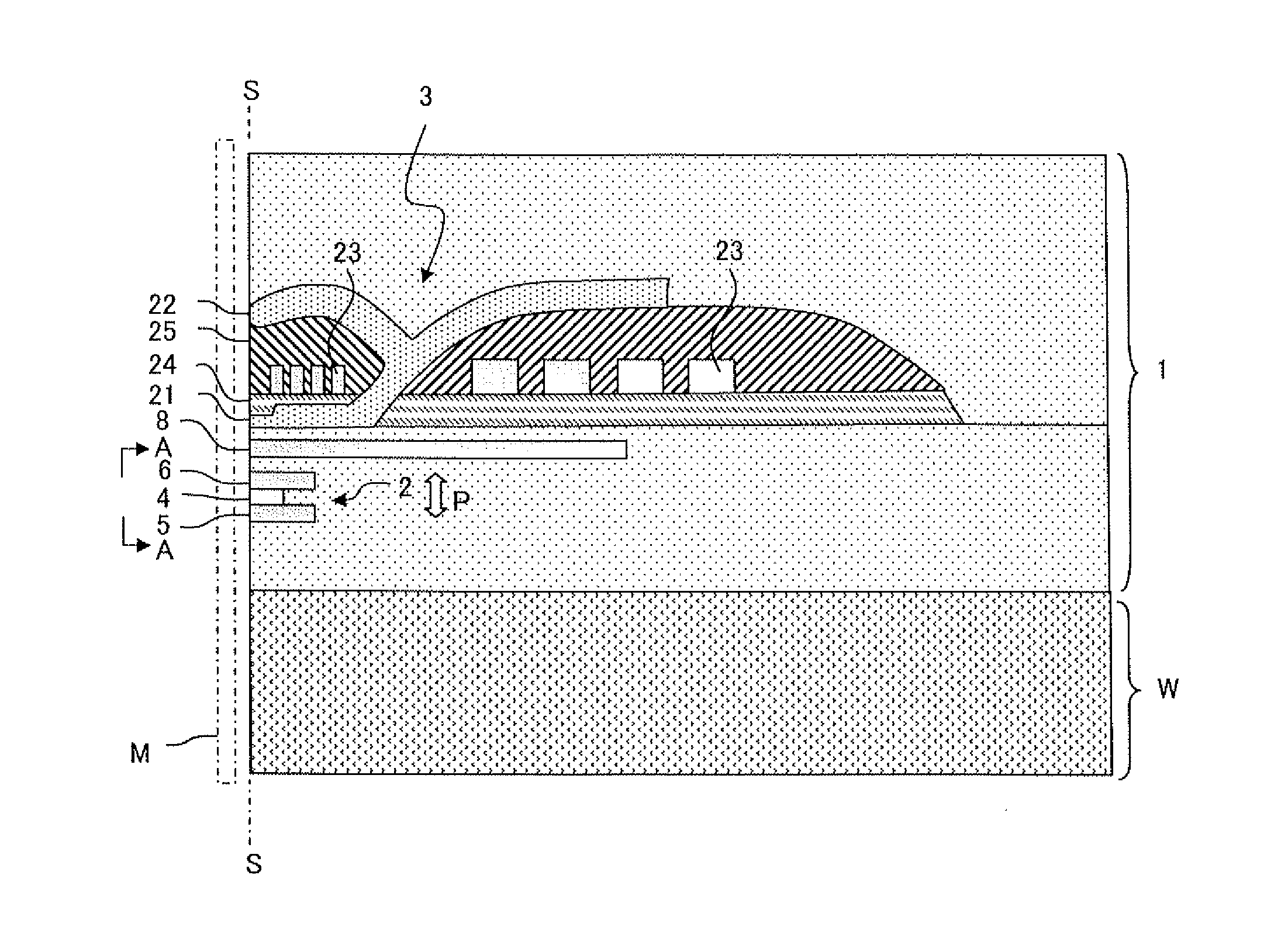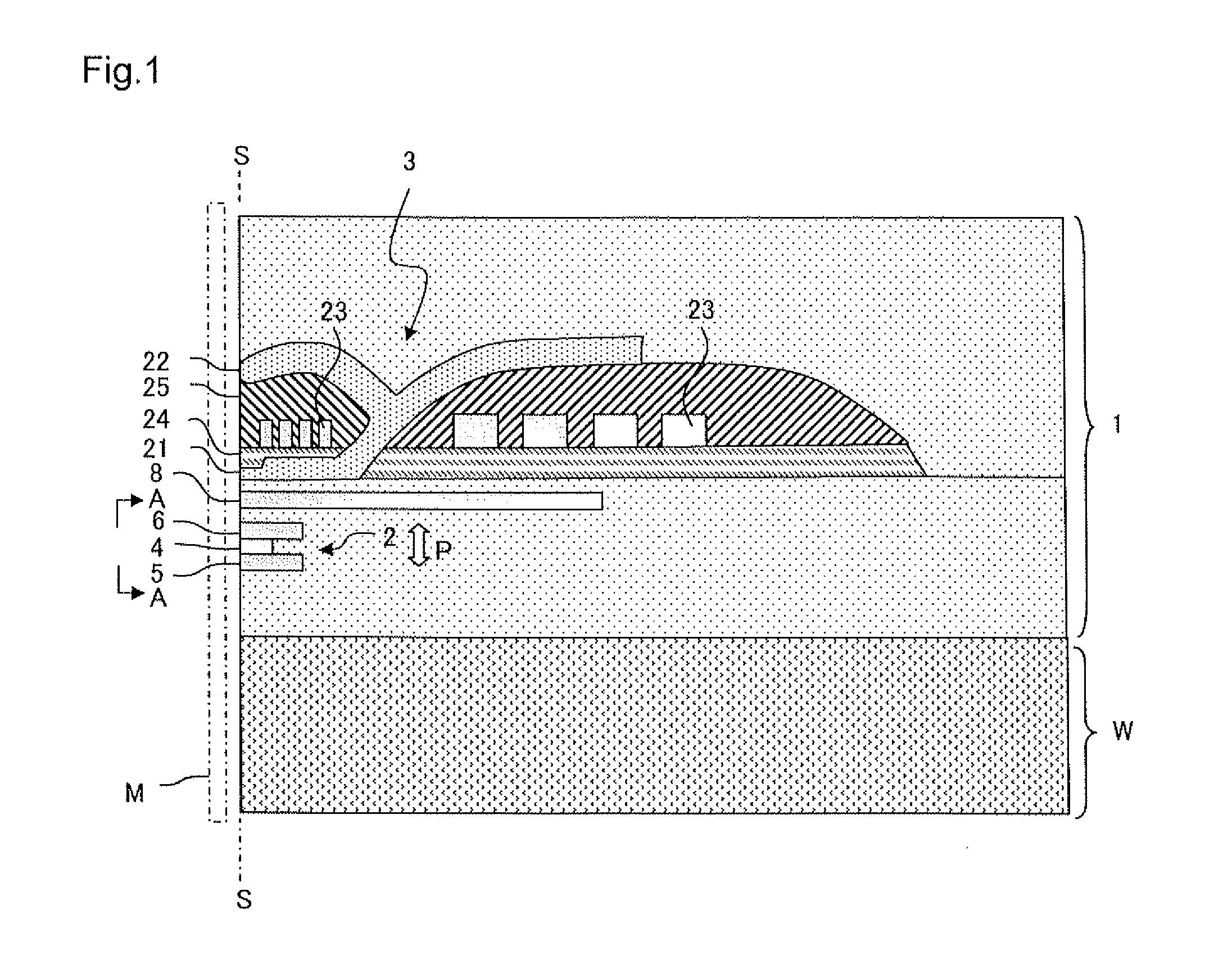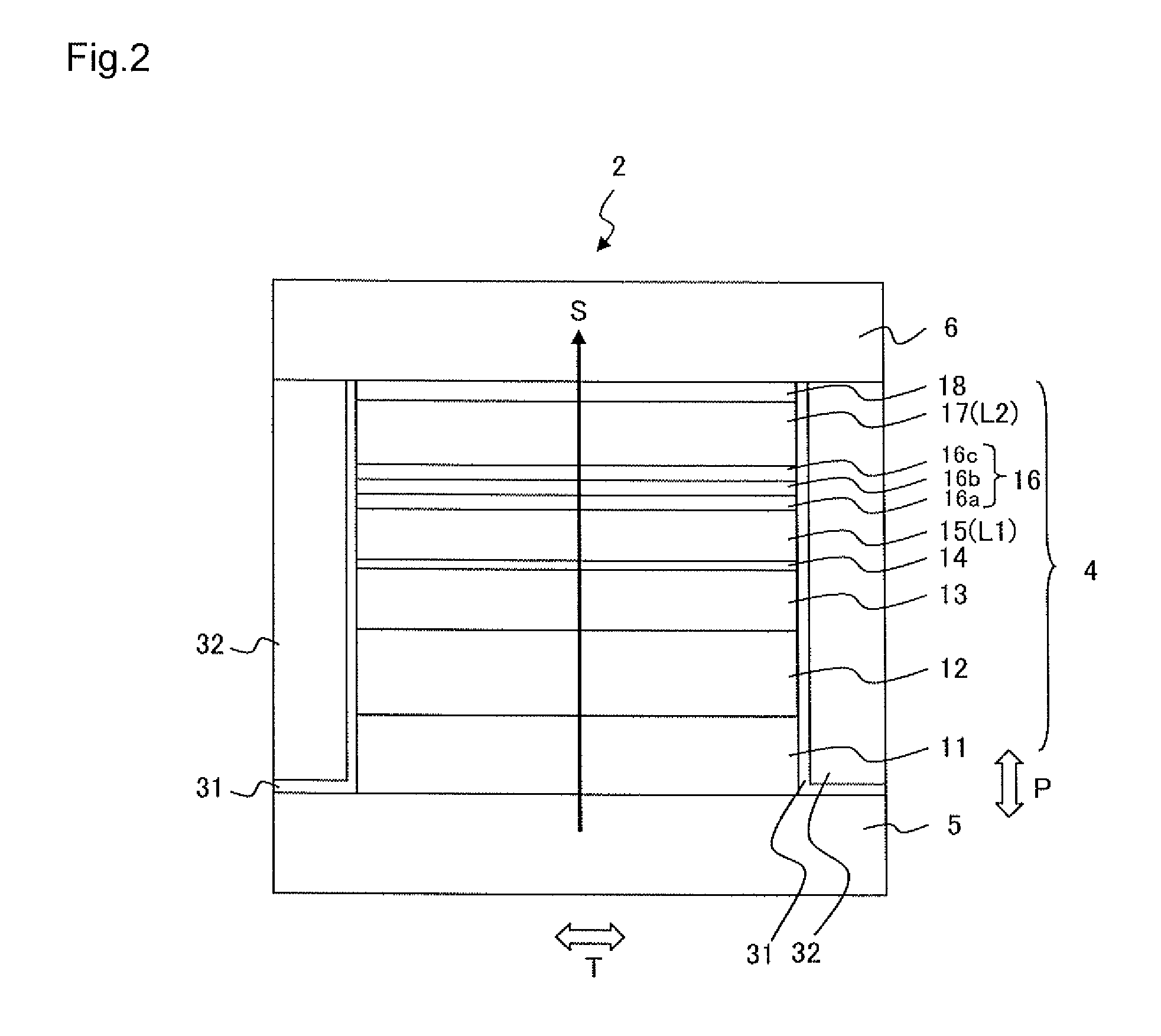Magneto-resistive effect element having spacer layer containing gallium oxide, partially oxidized copper
a technology of magnetoresistive effect and spacer layer, which is applied in the field of magnetoresistive effect element, can solve the problems of difficult to place anti-ferromagnetic layer within the read gap, technology is not preferable from the view point of reliability, and difficult to maintain a balance between
- Summary
- Abstract
- Description
- Claims
- Application Information
AI Technical Summary
Benefits of technology
Problems solved by technology
Method used
Image
Examples
first embodiment
[0024]FIG. 1 illustrates a main part cross-sectional view of a thin film magnetic head 1 according to a first embodiment. The thin film magnetic head 1 is formed on a substrate W and includes a reproducing head 2 and a recording head 3. FIG. 2 is a side view of the reproducing head 2 as viewed from the A-A direction of FIG. 1 and illustrates a layer configuration of the reproducing head 2 on the air bearing surface S. The air bearing surface S is a surface of the thin film magnetic head 1 that faces a recording medium M. First, a description is given regarding a configuration of the reproducing head 2 with reference to FIG. 2.
[0025]The reproducing head 2 includes a spin valve type MR element 4, upper and lower shield layers 6 and 5 disposed in a manner of sandwiching the MR element 4 in a film surface orthogonal direction (lamination direction) P, and bias magnetic field application layers 32 disposed on both sides in the track width direction T (sheet surface orthogonal direction i...
second embodiment
[0042]A thin film magnetic head 1 of the present embodiment is the same as the first embodiment illustrated in FIG. 1 with the exception of the configuration of the reproducing head 2. FIG. 3 and Table 2 illustrate a layer configuration of such an MR element. A reproducing head 102 includes an MR element 104 in which a large number of layers are laminated in the same manner as the first embodiment, and upper and lower shield layers 106 and 105 that are disposed in a manner of sandwiching the MR element 104 in the film surface orthogonal direction P (lamination direction). The upper and lower shield layers 106 and 105 are also used as electrodes for a sense current S so that a sense current S flows in the film surface orthogonal direction P of the MR element 104.
[0043]In the present embodiment, a first magnetic layer L1 and a second magnetic layer L2 are both magnetization free layers 115 and 117 of which the respective magnetization directions change in response to an external magne...
example
[0056]An MR element with the layer configuration illustrated in Table 2 was formed above a substrate composed of Al2O3—TiC (ALTIC) by using a sputtering device. A nonmagnetic layer 116c was composed of Zn. After a film forming chamber pressure was depressurized to a vacuum atmosphere having 10−6 Pa or less, Ar gas was introduced into the film forming chamber and layers were formed under a sputtering pressure of approximately 0.1 Pa. A gallium oxide layer was formed by a radio frequency (RF) sputtering method, and other films were formed by a direct current (DC) magnetron sputtering method. The bottom layer was formed by forming a Cu film in a metal state and then partially oxidizing the Cu film by an oxygen plasma treatment (power: 30 W, Ar gas flowing rate: 10 mL / min, and oxygen gas flow rate: 20 mL / min). After the layers illustrated in Table 2 were formed, a heating (annealing) treatment was performed at 250° C. for three hours, and the MR element having a junction size of 0.2 μm×...
PUM
 Login to View More
Login to View More Abstract
Description
Claims
Application Information
 Login to View More
Login to View More - R&D
- Intellectual Property
- Life Sciences
- Materials
- Tech Scout
- Unparalleled Data Quality
- Higher Quality Content
- 60% Fewer Hallucinations
Browse by: Latest US Patents, China's latest patents, Technical Efficacy Thesaurus, Application Domain, Technology Topic, Popular Technical Reports.
© 2025 PatSnap. All rights reserved.Legal|Privacy policy|Modern Slavery Act Transparency Statement|Sitemap|About US| Contact US: help@patsnap.com



